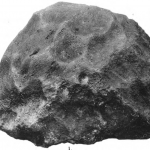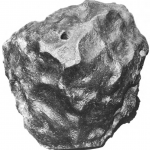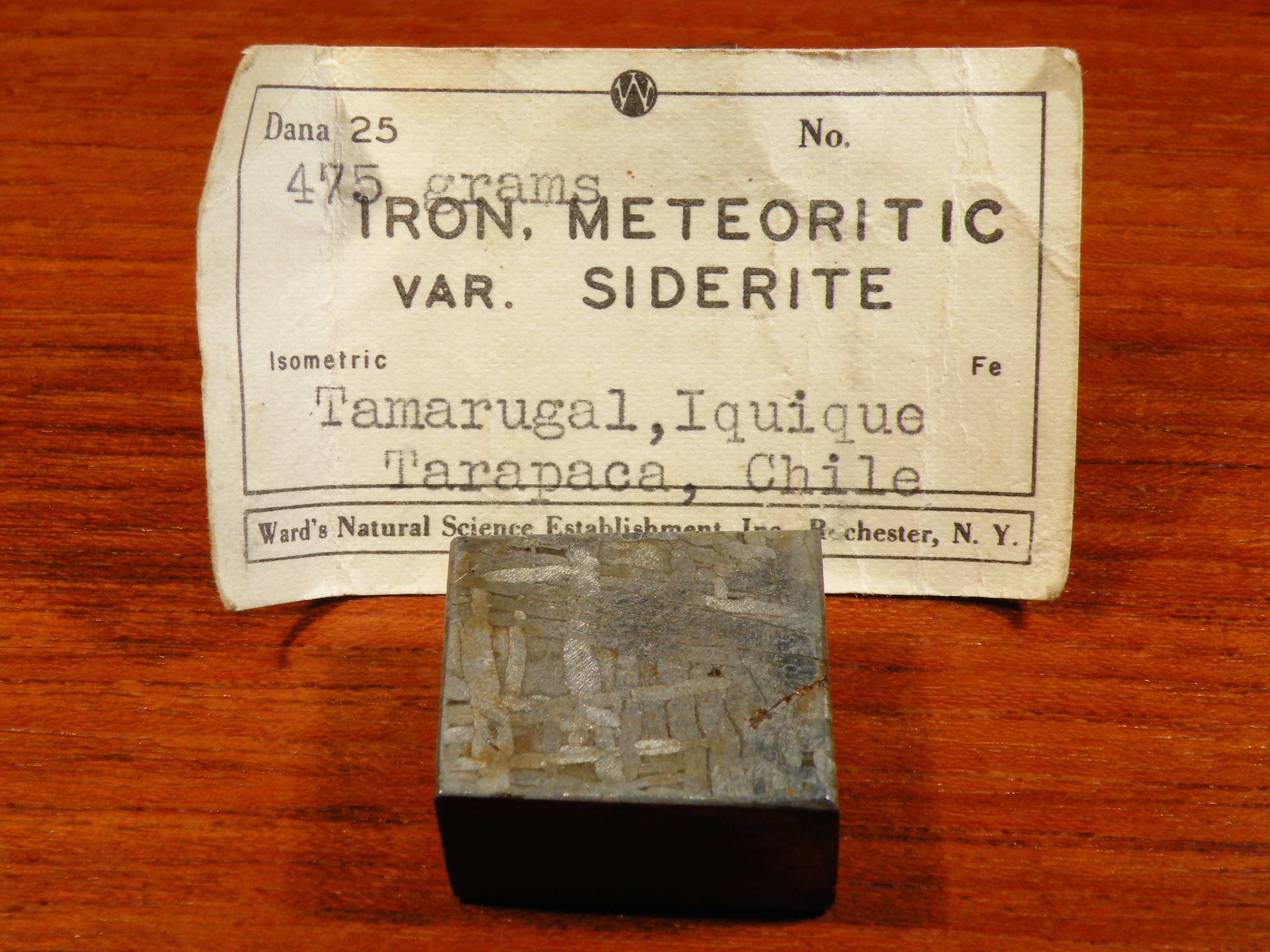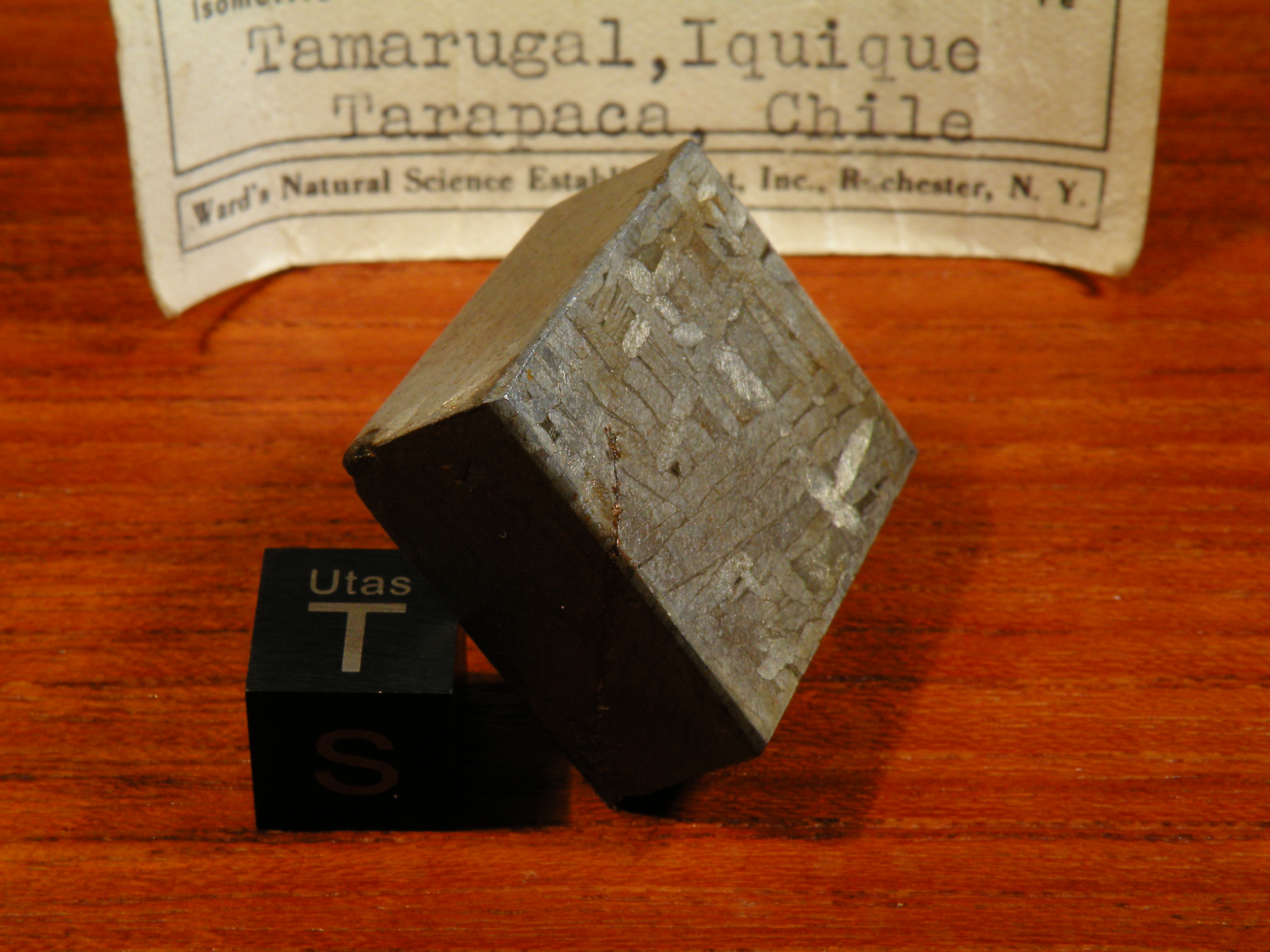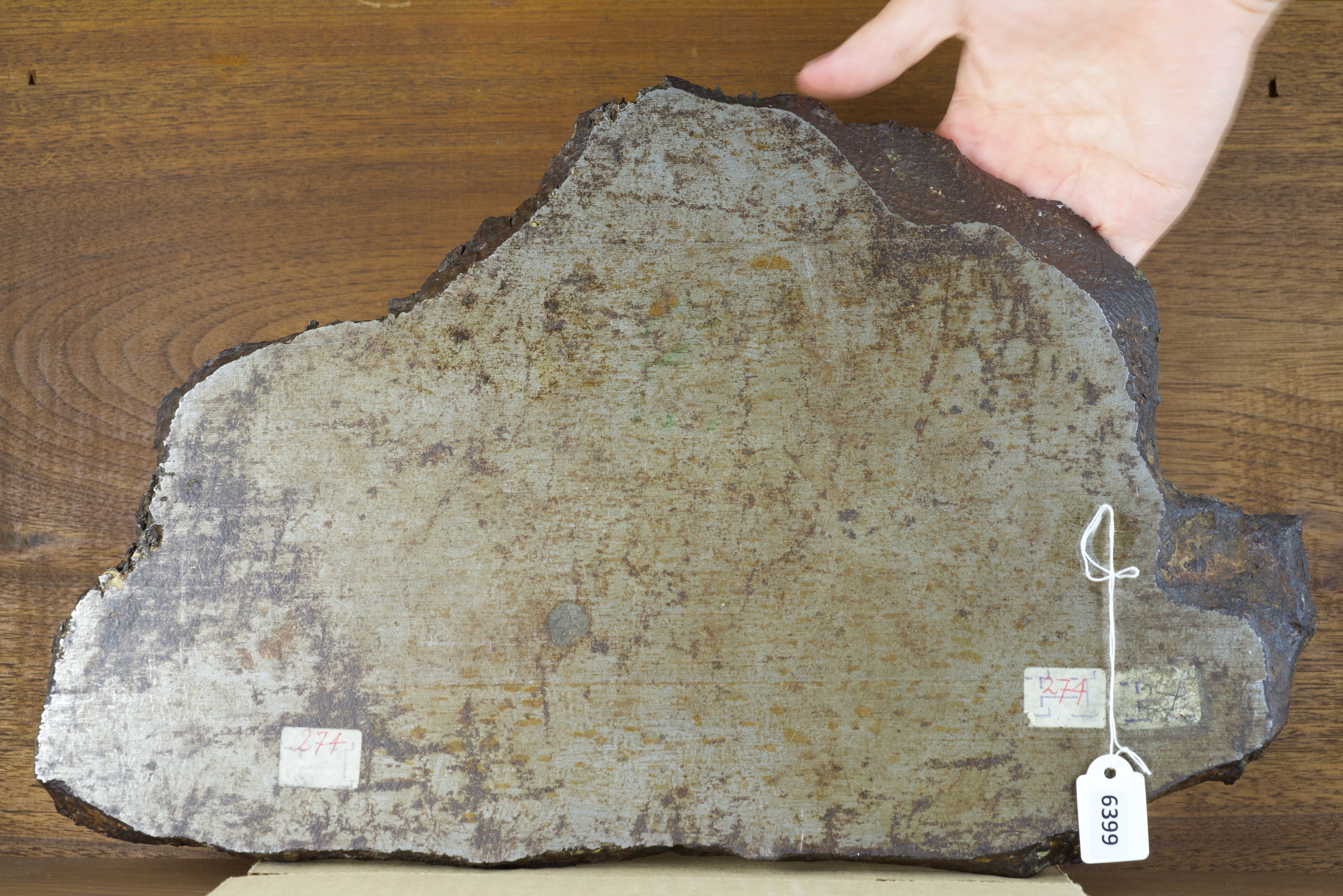Tamarugal, IIIAB
Tamarugal was discovered in Chile in 1903. It is one of a handful of ‘ancient’ meteorites, with a terrestrial age of approximately 2.7 million years. Despite its unusually high terrestrial age, Buchwald estimated that it had lost only 3-4 mm from its surface since falling; remnants of its heat-altered rim were preserved! Unfortunately, the 320 kilogram mass was completely sectioned soon after it was found, into slabs 7-20 mm thick. The cutting resulted in 190 kilograms of slices; over a third of the meteorite was lost as shavings and dust.
Here’s Buchwald’s take on the iron, from The Handbook of Iron Meteorites: Tamarugal
And here are two photos of the main mass prior to cutting, from El Inca, ein neues Meteoreisen, by F. Rinne & H. E. Boeke (1907). See p. 227 for the article (in German), plates are near the end of the book.
This 47.5 gram specimen was cut from one of the aforementioned thick slabs by Ward’s Natural Science Establishment in the early 1900s.
In early 2020, one of the original slabs cut by F. Kranz & Friedrich Krupp in 1906 turned up at an auction in Germany. It came from the estate of the Munich architect and university professor Franz Hart (2). It weighs 6.2 kg, and measures ~35 x 23 x 2 cm.
